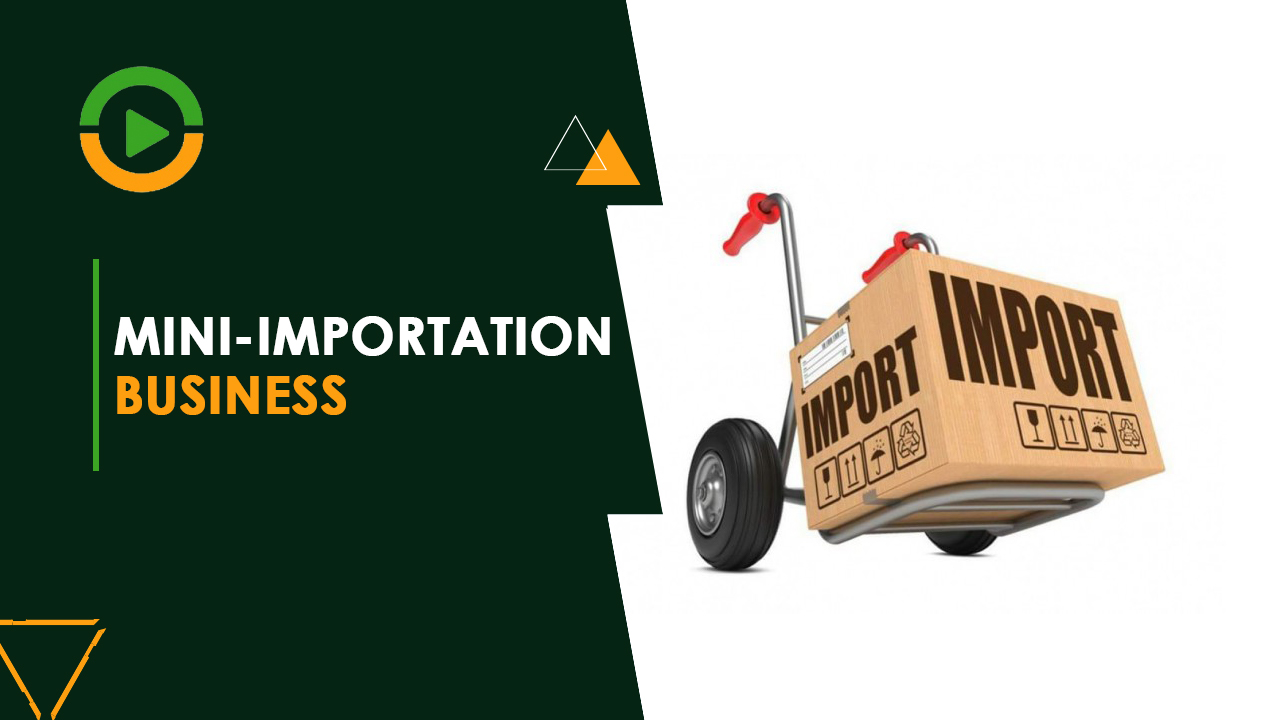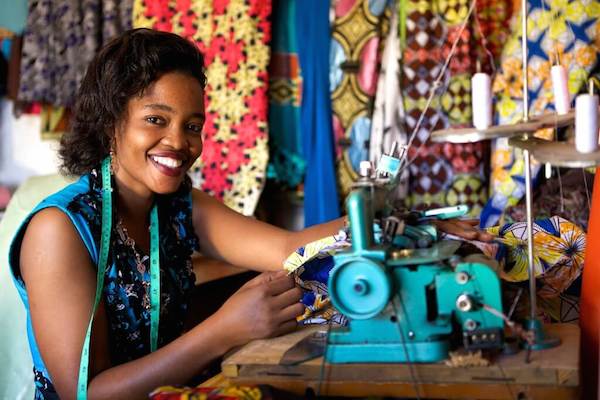Back in 2019, I was sitting on just ₦50,000, dreaming of something bigger than my regular job. That wasn’t a ton of cash, barely enough for a few bills or maybe a small treat, but it was all I had to kickstart an e-commerce business. Fast forward, and that little seed has grown into a six-figure hustle. It’s been a crazy journey with plenty of ups, downs, and lessons learned the hard way. If you’re thinking about jumping into e-commerce or you’re already trying but hitting walls, here’s my story, packed with the real stuff that got me from ₦50,000 to where I am now.
The Spark: Why I Took the Leap
In 2019, I was grinding at a 9-to-5 in Lagos. It paid the bills, but it left me restless. I wanted more, not just money, but the freedom to run my own show. I kept seeing people on Instagram and Twitter posting about their online businesses, selling everything from clothes to tech gadgets. It looked like something I could pull off. The problem? My savings were tight, just ₦50,000 I’d scraped together by skipping outings and picking up small side gigs. It wasn’t much, but it was enough to get me excited.
I didn’t know a ton about e-commerce, but I’d heard about dropshipping, where you sell stuff without keeping inventory. It felt like the perfect fit for my tiny budget since I wouldn’t need to buy stock upfront. My plan was simple: start small, learn quick, and grow from there. I decided to focus on women’s fashion accessories, like earrings, necklaces, and scarves. They were cheap to source, easy to ship, and super popular in Nigeria.
Getting Going: Stretching ₦50,000
With just ₦50,000, I had to make every kobo count. A fancy website was out of the question, so I turned to Instagram, which was free and already full of potential customers. I spent ₦10,000 on a logo and some basic branding from a local designer to make my page look legit. Another ₦15,000 went to data bundles and a few boosted posts to get people to notice my stuff. The remaining ₦25,000 was tucked away for future marketing and any surprises.
Finding a supplier was the toughest part. I spent hours scrolling through AliExpress, looking for vendors with solid reviews and affordable accessories. With dropshipping, I’d list their products on my Instagram, and when someone ordered, I’d buy from the supplier, who’d ship straight to the customer. It sounded easy, but I was nervous. What if the products were junk? What if shipping took forever? Still, I picked a supplier, listed a few items, and started posting.
The Early Days: Stumbles and Small Victories
Those first few weeks were quiet, like crickets-in-the-desert quiet. I posted every day, showing off earrings and scarves, but my inbox was dead. My first sale came after 10 days, a ₦3,000 pair of earrings. I was over the moon, but after paying the supplier and shipping, I made maybe ₦700. It wasn’t big money, but it felt like a win.
Early on, I learned a hard truth: people don’t buy from random Instagram pages. My page looked okay, but I was just another seller in a crowded space. To stand out, I started mixing things up. Instead of just product pics, I shared styling tips, quick videos on how to pair accessories, and fun polls to get people engaged. Slowly, my followers grew from 200 to 500, then 1,000. I started getting DMs with questions about prices or custom orders.
But it wasn’t all rosy. I had some real headaches. One customer got a necklace with a busted clasp, and they were not happy. I had to refund them from my own pocket, which hurt. Another time, a package took six weeks to arrive from China, and the customer thought I’d scammed them. I learned to be super clear about shipping times, even texting customers updates to keep them calm. It was a lot, but it helped build trust.
Finding My Flow: Building a Community
By month three, things started to click. I’d made about ₦30,000 in profit, enough to pour back into marketing. I joined WhatsApp groups where women swapped fashion tips and started sharing my products there. Chatting directly with customers was a game-changer. They liked that I answered questions fast and didn’t sound like a robot. Word-of-mouth kicked in, and my orders doubled.
I also got smarter about pricing. At first, I was selling too cheap, barely breaking even. After some digging, I realized I could charge more if I pitched my accessories as trendy and high-quality. I started offering bundles, like a necklace and earring set at a small discount, which got people spending more. By the end of 2019, I was hitting ₦50,000 a month in sales, with profits around ₦15,000 to ₦20,000. It wasn’t life-changing, but it showed me I was onto something.
Stepping Up: From Side Gig to Real Deal
By mid-2020, I’d saved up ₦100,000 from profits, and I was ready to level up. I used ₦30,000 to build a simple website on Wix. It wasn’t fancy, but it gave me a proper spot to show off my products and look more professional. I spent another ₦20,000 on Google Ads to drive traffic to the site. Those ads brought in customers beyond my Instagram crowd, and my sales jumped to ₦80,000 a month.
I added handbags and sunglasses to my lineup, and they were a hit. To avoid shipping delays, I started working with multiple suppliers, comparing their quality and delivery times. I also set up a WhatsApp Business account with automated replies for common questions like “How much is delivery?” or “Is this in stock?” It saved me hours and made customers feel like they were dealing with a legit business.
Email marketing was my next big move. I added a sign-up form to my website, offering a 10% discount for first-time buyers. That email list grew slowly but became a goldmine. I sent weekly newsletters with new arrivals, styling tips, and special deals. Customers loved the personal vibe, and repeat orders started coming in.
The Big Win: Hitting Six Figures
By 2021, my business was consistently pulling in ₦100,000 in monthly sales, with profits around ₦40,000 to ₦50,000. That’s when I knew this wasn’t just a side hustle anymore. I quit my 9-to-5, which was both terrifying and thrilling. I had enough savings to cover a few months, and I was ready to go all in.
One thing that pushed me into six-figure territory was getting better at ads. I learned to target my Instagram and Facebook ads to women in Nigeria who were into fashion. Instead of wasting cash on broad campaigns, I focused on people searching for stuff like “trendy earrings” or “affordable handbags.” This brought in more clicks that actually turned into sales.
I also started working with micro-influencers. I couldn’t afford big names, but I sent free products to Instagram users with 5,000 to 10,000 followers. One influencer’s post about my earrings led to 25 orders in a single day, my best day yet. Those partnerships helped me reach new people without spending a fortune.
The Growing Pains
Hitting six figures wasn’t all smooth. More orders meant more customer service headaches. I dealt with everything from lost packages to picky customers wanting refunds. I also had to keep an eye on cash flow, making sure I could pay suppliers while still funding ads and new products.
Competition was another challenge. As my business grew, I saw more sellers popping up with similar stuff. To stay ahead, I offered free shipping on orders over ₦10,000, which got customers to spend more. I also started including handwritten thank-you notes and small freebies, like a keychain, with every order. Those little touches kept customers coming back and telling their friends.
What I’ve Learned
Looking back, the journey from ₦50,000 to six figures taught me so much. Here’s what I’d share with anyone starting out:
Start Where You Are
You don’t need a big budget to begin. My ₦50,000 worked because I used free platforms like Instagram and stuck with dropshipping. Use what you’ve got and build from there.
Trust Is Everything
People won’t buy if they don’t trust you. Be honest about shipping times, answer messages quickly, and deliver what you promise. A happy customer will spread the word, and that’s better than any ad.
Keep Testing
I wasted time early on by sticking to stuff that wasn’t working. Try different products, prices, and marketing ideas, then double down on what gets results. Data is your best friend.
Stay Consistent
There were days I wanted to throw in the towel, especially when sales were slow. But posting regularly, chatting with customers, and tweaking my approach kept me moving forward.
Keep Learning
I spent hours watching YouTube tutorials and reading blogs about e-commerce and marketing. The more I learned, the better my business got. Knowledge is free and powerful.
What’s Next
I’m not stopping at six figures. I’m aiming for seven figures and maybe even a physical store someday. I’m also looking into local suppliers to cut down on shipping times and support Nigerian businesses. Plus, I’m working on my own branded accessories to make my business stand out even more.
This journey’s been a wild ride, and I’m still learning every day. If you’re reading this and thinking about starting your own e-commerce hustle, don’t let a small budget stop you. It’s not about how much cash you have; it’s about how much heart and hustle you bring.
Key Point: Turning ₦50,000 into a six-figure e-commerce business in a few years is doable with a clear niche, relentless effort, and a focus on building trust with customers. Start small, learn fast, and keep pushing forward.


